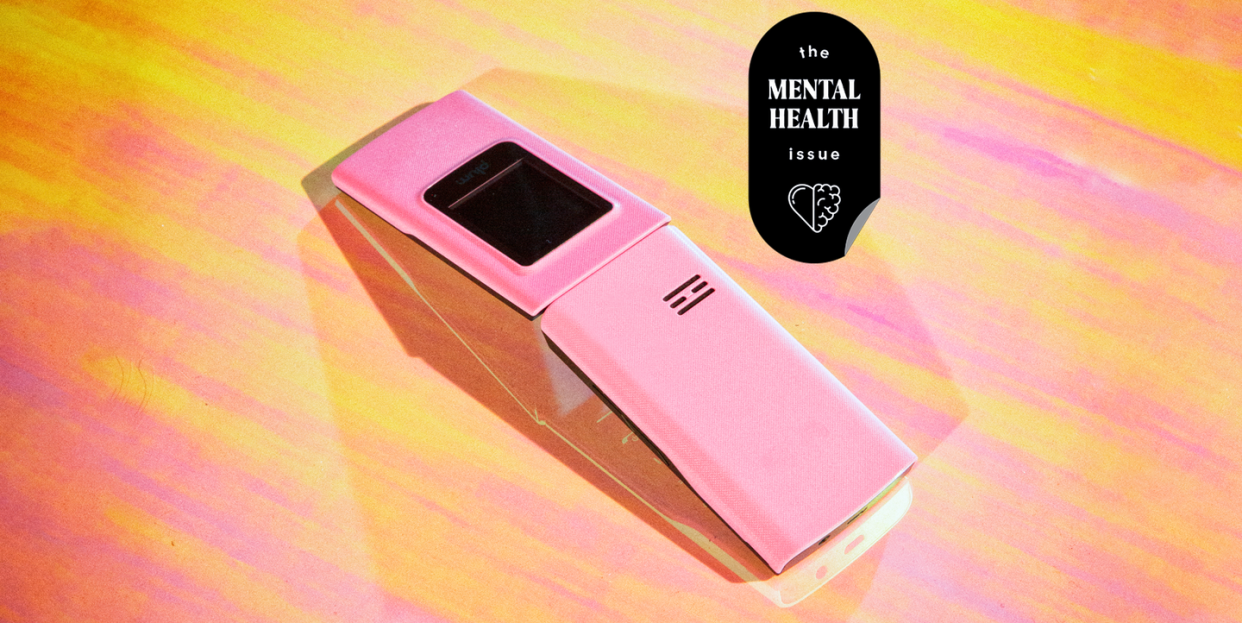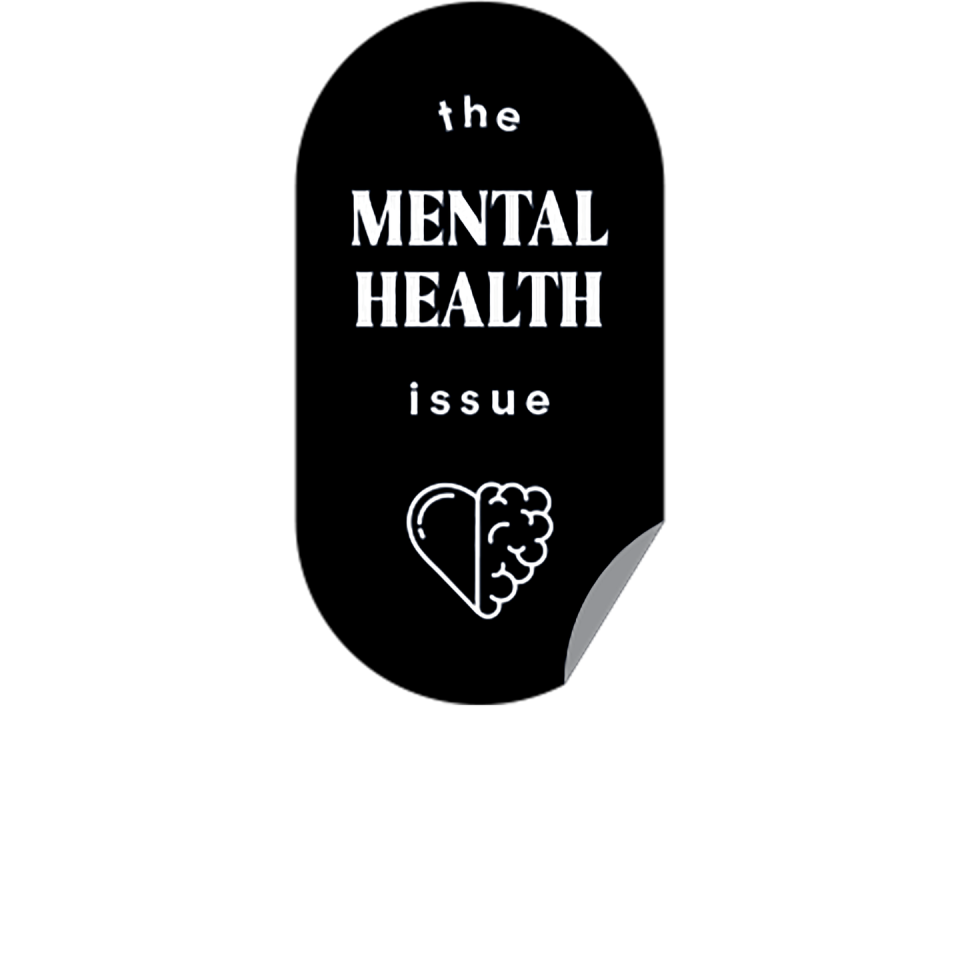What You Need to Know About 988, the New Suicide Hotline Number

Content warning: This story discusses suicidal ideation.
It's well established that talking it out can be incredibly helpful on a bad mental health day. But sometimes, you need more than just your best friend or mom to lend an ear. On really bad days, you need to speak to a professional. Especially if you're having thoughts of suicide. (And, we know you know, but having a long-term therapist is always a great idea!)
In dark times, you are never alone—and you're well on your way to getting help if you've got a phone thanks to the Suicide & Crisis Lifeline, a hotline with trained crisis counselors at the ready to give you the support and resources you need to make it through. A revamped version of the Lifeline—which you can reach by dialing 9-8-8—was rolled out nationwide this summer, with new-and-improved features designed to get more people the help they need when it comes to their mental health.
Here, we're breaking down exactly what 988 is, what it aims to do, and what you can expect if you call it. We're also clarifying why you may have seen some concerning posts about it on social media back when it launched because, yep, we've got your back. Read on to learn more.
What exactly is 988?
988 is the new number for the Suicide & Crisis Lifeline, a network of more than 200 local crisis centers across the country dedicated to providing over-the-phone support (either by call or by text) for people who are in suicidal crisis or emotional distress. The service is free, confidential, and available 24 hours a day, seven days a week for Americans. It is operated by the U.S. Substance Abuse and Mental Health Services Administration (SAMHSA).

The 9-8-8 number became active in July 2022, in the hopes that a short, memorable number—similar to 9-1-1—would increase the accessibility of the service and get more people the support they need. It is available by call, text, or chat. FYI, 988 is a revamped version of what was previously referred to as the National Suicide Prevention Lifeline, a service that first launched in 2005 and was available by calling 1-800-273-TALK (8255). That number will remain active indefinitely, but calls will be routed to 988.)
The new 988 service has been backed by more than $400 million in federal funding. This funding has helped secure a few major things, including: increasing the number of crisis call centers available nationally (bringing the total from 180 to 200), ensuring that a backup call center will always be available if a local center is too overwhelmed to pick up, creating a digital messaging service in case someone isn't able to talk at the moment, and, finally, bolstering a network of Spanish-speaking counselors.
What can I expect when I dial 988?
When you call 988, your call will be connected to a crisis center as close to your location as possible, based on your area code. (The same is true if you text 988.) You will hear a welcome message as your call is connected. If the crisis center closest to you is busy, your call will be transferred to a backup crisis center. This is beneficial in two main ways: Firstly, it works to ensure that no call goes unanswered—a problem that has plagued the Lifeline in the past due to a surplus of callers and a deficit of available call-takers. And secondly, it allows the call-taker to find additional resources for the caller that are close to their home, if ongoing care is required.

When you do connect to a crisis center, a trained crisis counselor will answer the call and ask you questions about how you're feeling, what you're struggling with, and how it's affecting you. They will then try to support you by listening to what you're going through, working to reduce the intensity of the situation by providing perspective and talking through solutions. They will also connect you with any resources—online, local, or otherwise—that they think might help. These calls can be conducted in English or Spanish, or a program called Language Line Solutions can be implemented to provide translation for 250 other languages. If you chat or text 988, however, English is the only language available at this time.
According to the SAMHSA website, 988 staff members “work through active engagement to provide support and assistance for people at risk in the least restrictive setting possible,” while adhering to the Lifeline’s Imminent Risk Policy. That means that a staff member will not call emergency services (like the police) unless they believe it is truly critical—specifically if a suicide attempt is actually underway. We'll talk about this more in the next section.
TL;DR: If you aren't in the middle of a suicide attempt while calling, you don't need to be afraid of being hospitalized or having emergency services called on you. If you need support, you shouldn’t hesitate to dial.
How is calling 988 different from calling 911?
In the midst of a mental health crisis, many people end up calling 911 for either themselves or their loved ones. Unfortunately, not all emergency services workers—such as police officers, firefighters, and EMTs—have been adequately trained to help people dealing with mental health crises, which can lead to more trauma for those involved. Case in point: in 2019, 1 out of 5 fatal police shootings involved a person with a mental illness.
988 was therefore designed to be complementary to 911—ensuring that people in crisis get the correct kind of care. Unlike emergency services workers, 988’s crisis center staff members have been fully trained to deal with mental health crises of all kinds, and should be gentle, thorough, and mindful when providing support. As previously mentioned, according to Lifeline’s Imminent Risk Policy, crisis center staff members may dispatch emergency services without the consent of the caller, but only when they deem it absolutely necessary as a means to save the life of the caller. This is called “active rescue.” According to the SAMSA FAQ page, currently, “fewer than 2% of Lifeline calls require connection to emergency services like 911,” and when they do, “the 988 coordinated response is intended to promote stabilization and care in the least restrictive manner.”
I’ve been seeing a lot of concerns about 988 on social media. What should I be concerned about?
When 988 first rolled out this summer, a number of posts about the service began circulating on social media—both good and bad. While many praised SAMHSA and the federal government for focusing on improving the Lifeline service and making it more accessible, others were quick to point out that the service still has flaws.
The main concern? The fact that the service uses "active rescue"—the practice by which counselors will dispatch emergency services if they deem it necessary in order to save the caller's life—as discussed in the previous section. Many posts from mental health advocates (such as this one on Instagram and this one on Twitter) expressed concern over the practice of active rescue, sharing that dispatching emergency services without the caller's consent can be traumatizing and dangerous for the caller. This is especially true if they belong to a marginalized community, as people in these groups are statistically more likely to die at the hands of police.
This whole thread from E Krebs, a suicidologist and Assistant Professor at Fordham University, is worth a read:
We'll be the first to admit it: 988 is not perfect. It's hard not to find flaws in a service that exists within the larger American infrastructure, which is already deeply...well, f*cked up. Just look at our legal system or our healthcare system, both of which are inextricably intertwined with mental healthcare. There is so much more work that needs to be done, and gaps that need to be filled, to make sure that quality mental healthcare is available to everyone in this country. But in our opinion, 988 is a step in the right direction, and has the potential to help many people. So don't be afraid to call it if you need it.
Are there any good alternatives to calling 988?
988 is not your only option if you find yourself or a loved one in a mental health crisis. Some other great (and free) over-the-phone services include:
The NAMI HelpLine: If you need emotional support but are not in crisis, you can call 1-800-950-NAMI (6264) or text "HelpLine" to 62640 to be connected to the National Alliance on Mental Health’s HelpLine. It’s run by staff members and volunteers who are trained to offer support, answer questions, and figure out the best next steps for those who call.
The Trevor Lifeline: For LGBTQ+-specific crisis counseling, you can call the Trevor Project at 866-488-7386. The service is 100% free and 100% confidential, and open 24 hours a day, seven days a week, 365 days a year. If you don’t want to call, you can also text or chat.
The Trans Lifeline: The Trans Lifeline, available by calling 877-565-8860 in the U.S. or 877-330-6366 in Canada, is a crisis hotline for trans people. It is run by the trans community, helping connect peers to community support and resources. They are completely divested from police.
Crisis Text Line: Text HOME to 741741 from anywhere in the U.S. at any time to be connected to a trained crisis counselor whether you're in crisis or just need to talk to someone. The counselors are trained volunteers, not medical professionals, so they can offer support but not medical advice.
National Domestic Violence Hotline: If you believe you are in an abusive relationship, are a survivor of domestic violence, or are watching a loved one suffer, you can call the National Domestic Violence Hotline at 800-799-SAFE (7233), 24 hours a day, seven days a week. Their Language Line feature allows you to get help in over 140 languages with the help of a trained interpreter.
National Sexual Assault Hotline: Survivors of sexual assault can call 800-656-HOPE (4673) to be connected to a trained staff member who can give confidential support and connect you to local resources. There's also a live chat function, which you can access on the Rape, Abuse & Incest National Network (RAINN) website.
You Might Also Like